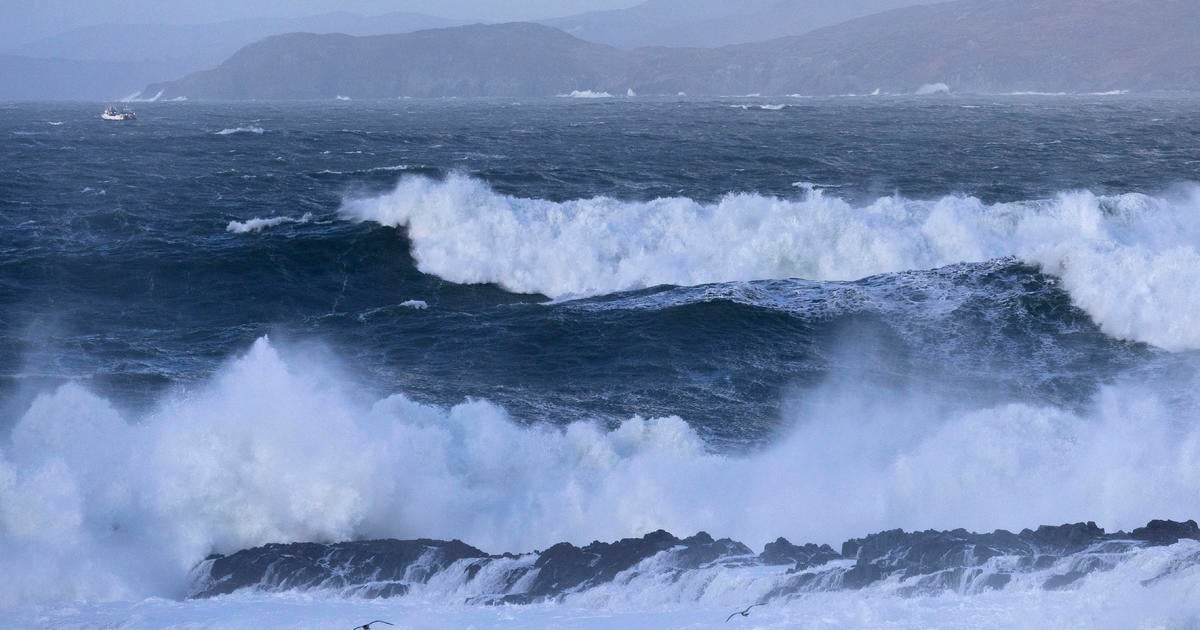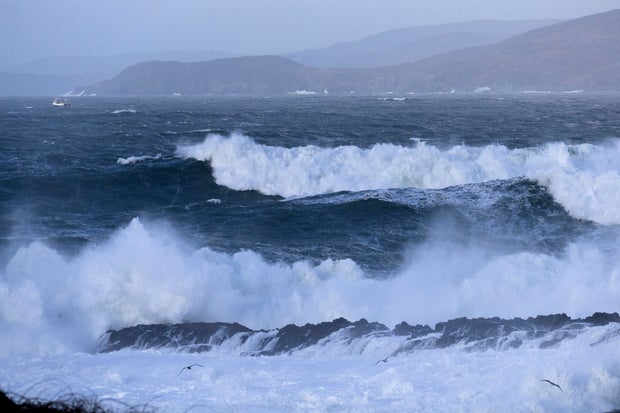Ireland, western UK hit by record winds as Storm Eowyn shuts down traffic, leaves thousands without power
London — Record winds lashed parts of Ireland, Northern Ireland and mainland Britain on Friday, with gusts expected to spread across the region, including across Scotland, as the islands bear the brunt of Storm Eowyn.
The Republic of Ireland’s national weather service, Met Éireann, said winds of up to 114mph were gusting in the country’s County Galway – the highest ever recorded on the island.
The Republic of Ireland was under a “Red Alert” from its meteorological agency, meaning the public was warned that the storm was “extremely destructive and dangerous”.
JOHANNES EISELE/AFP/Getty
ESB Networks, the government-run body responsible for most of Ireland’s electricity grid, said on Friday morning that more than 715,000 homes, farms and businesses were without power as a result of the storm. More blackouts are expected on Friday, the ESB said.
More than 230 flights scheduled to depart or arrive at Dublin Airport were canceled on Friday morning due to the severe weather, and all public transport across Ireland was suspended as government officials warned the public to stay indoors.
Charles McQuillan/Getty Images
The UK’s Met Office said on Friday that it was similar red warning notices It was present in parts of Northern Ireland and Scotland.
Winds of more than 90mph were recorded in Northern Ireland and parts of north Wales on Friday morning as Storm Éowyn moved towards the UK. Many trains and other public transport were closed in northern Britain and there were initial reports of some damage to trees and buildings.
“Storm Eowyn is now bringing very strong winds to parts of the UK. There is the potential for gusts of 100mph in exposed areas within the Red Warning zone,” UK Chief Meteorologist Jason Kelly said in a statement on Friday. “Anyone in these Red and Amber warning zones should heed the advice of local responders and be aware of weather warnings for their area.”
In the UK, the most severe red warnings, indicating a possible danger to life, covered Northern Ireland and the far north of England, southern and central Scotland, but the amber warning area, indicating possible travel disruption and the risk of flying debris, covered a wider area, stretching south to Manchester and Liverpool .









